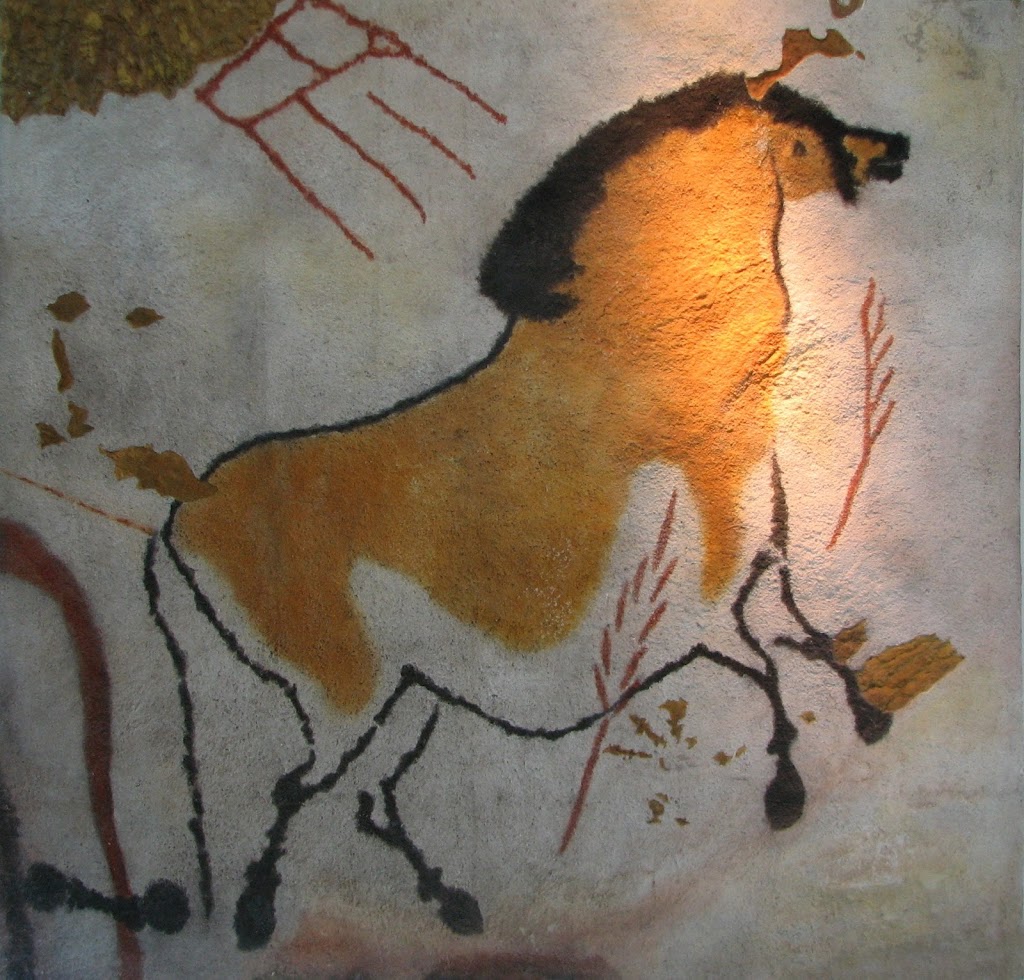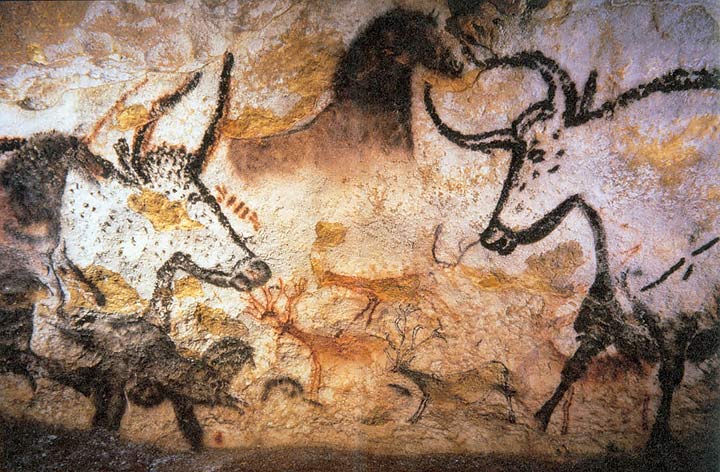
A horse from Lascaux.
Replica in the Brno museum Anthropos
On September 12, 1940, the famous cave paintings in Lascaux, were discovered. Lascaux is the setting of a complex of caves near the village of Montignac, France. Over 600 parietal wall paintings cover the interior walls and ceilings of the cave. The drawings are the combined effort of many generations, and with continued debate, the age of the paintings is estimated at around 17,000 years. Lascaux was inducted into the UNESCO World Heritage Sites list in 1979.
It was supposed to be a treasure hunt, and even though the four children found a treasure, it was not what they expected. There used to be a rumor, that under the Vezere River linking the old Castel of Montignac to the Manor of Lascaux there was a tunnel and in it, Marcel Ravidat, Jacques Marsal, Georges Agnel and Simon Coencas hoped to make the discovery of their lives. In their company, the four boys had the dog named Robot, that began digging a hole, whereby the boys thought they had discovered a tunnel entrance. After climbing into the dangerous holes, the young explorers discovered a “cavalcade of animals larger than life painted on the walls and ceiling of the cave” as one of them noted.

Cave Paintings: Aurochs, horses, and deer at Lascaux (wikipedia)
All kids were astonished by their findings and swore to keep them as a secret. They came back to continue their discoveries for some days until they were not able to remain quiet any longer. They started giving cave “tours” for their friends, taking a small amount of money and showing everyone around until the whole town came to see the enormous paintings and the boys became overwhelmed by the number of visitors. Their first choice person of advice was their teacher Leon Laval, who told them to take care of the paintings and watch out for vandals, which they did. The youngest of the four friends was then to camp outside the cave and give guided tours if desired. Later on he was officially hired as the cave’s chief guide and he kept this job until he passed away in 1989. By accident, the famous pre-historian Abbe Breuil found out about the paintings and things became official. The cave was soon known globally and privately purchased, which increased its commercial exploitation.
Originally, the cave paintings were attributed to the early Magdalenian, about the period between 17,000 and 15,000 BC. By finding older artefacts from the Solutréan, doubts about this assignment have become loud. Authors such as Norbert Aujoulat consider the cave to be even older and thus approach Breuil’s assumption of the assignment to the Périgordian (ca. 36,000 – 19,000 BC). The Lascaux cave is relatively small; its entire system of passages, with a maximum height difference of 30 metres, is no longer than 250 metres. The cave consists of two levels, whereby the works of art are located exclusively in the upper, carbon dioxide-free level. The Bull Room is undoubtedly the most spectacular section of the Lascaux Cave. It contains only paintings, since the walls are covered with calcite and are badly suited for scratch drawings. Some of the illustrations can take on impressive dimensions, such as the famous “Taurus” – landmark of the Dordogne – with 5.20 metres.
The first problems came up as a result of the many visitors. Carbon dioxide, produced by the people and the extreme humidity caused the development of moisture, which began to harm the paintings. The cave was then closed for the public and only a small group of scientists could enter.
Cave Art 101 | National Geographic, [6]
References and Further Reading:
- [1] Lascaux Website
- [2] Lascaux Caves at Musée Archéologie Nationale
- [3] Lascaux at Wikidata
- [4] Maria Reiche – Keeper of the Nazca Lines, SciHi Blog
- [5] Antonio Bosio and the Rediscovery of the Roman Catacombs, SciHi Blog
- [6] Cave Art 101 | National Geographic, National Geographic @ youtube
- [7] “Lascaux’s prehistoric cave of wonders discovered by a dog”. www.dailytelegraph.com.au. 10 September 2015.
- [8] Curtis, Gregory (2006). The Cave Painters: Probing the Mysteries of the World’s First Artists. New York, New York, USA: Knopf.
- [9] Map with Caves that contain Prehistoric Art, via Wikidata






Interesting post about caves!!!
Cool Math for kids
thanks for sharing.